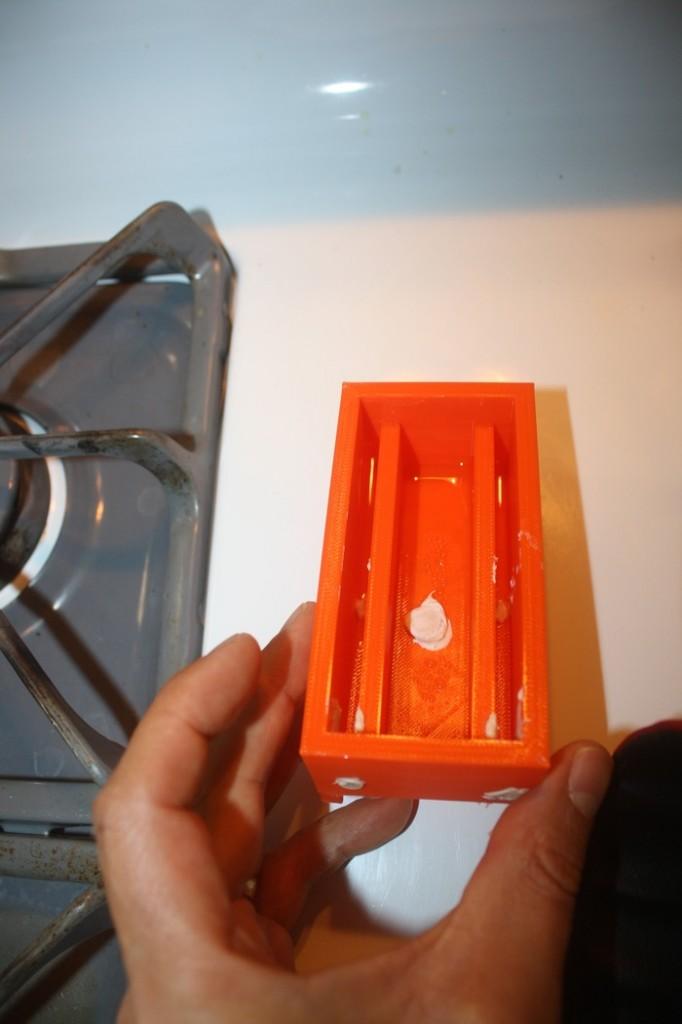3D Printed Aquapura Filters Saltwater: Kickstarter Campaign Aims to End World’s Fresh Water Shortage
 Frederick Janson plans to use 3D printing in facing one of the oldest and biggest challenges of the world: providing more fresh drinking water to the masses.
Frederick Janson plans to use 3D printing in facing one of the oldest and biggest challenges of the world: providing more fresh drinking water to the masses.
With over 98% of the world’s water in the form of saltwater, the obvious plan of attack is in converting that to fresh water. How difficult could it be to remove salt from fresh water? It sounds very easy with the Aquapura, which operates on the very simple principle of using heat in a multi-chambered unit to separate water from salt.
According to Janson, with his 3D printed filterless device, many lives could be changed — and saved — simply with the use of his solar still, which filters the salt out of fresh water as it heats up and evaporates out of the salty chambers. After being exposed to heat, the purified water is retained in an area below the central chamber of the 3D printed purifier.
Powered by ‘light and gravity,’ the purifying device is no flash-in-the-pan gimmick, and it certainly wasn’t created overnight. Janson had to refine the device and the way it was constructed and used in a number of ways due to a variety of requirements and concerns. Janson’s hope is to 3D print a water purifier as large as a three-story building, to sustain an entire community with drinking water, long term. The concept is viable in theory, as their smaller scale model works. What remains is finding funding for production and availability of technology.
Up until last year, Janson had the idea for the Aquapura but lacked the means and the capital to put it into action. The ‘means’ came in the form of a program at the Sacramento Library system, which was offering free access to 3D printers, 3D printing design software, and assistance with 3D printing, via a partnership with Design Spot. This was the catalyst for Janson, in educating and inspiring him to make 3D printed environmental and medical prototypes, with Aquapura as his shining example.
The funding portion of the project has been initiated as Janson has launched a Kickstarter campaign in hopes of raising $55,000 by November 28 to build an Aquapura that is large enough to provide fresh water to a community. While their goal is to be able to 3D print the optimum-sized, enormous Aquapura, plans are to scale it to size according to funding.
The Aquapura is a working prototype that was tested in California in September 2014 in temperatures ranging from 80-100 degrees Fahrenheit, with humidity ranging from 12-15%, yielding 3%-10% purified water from the total volume of water added within one to three hours. The corn-based plastic prototype currently measures 1.5” x 1.5” x 3”.
The first prototype Janson created was problematic in that the unit was printed with supports and with the lid attached, causing in-filling of the support material. By 3D printing the lid and base unit separately, they were able to fix this problem. After slicing the first prototype in half though, they decided to use it to experiment on possible erosion to the product caused by saltwater, and found that after two months of soaking in saltwater, it showed almost no visible defect, validating that the corn-based plastic prototype is extremely durable and able to withstand elements such as saltwater and sunlight. Leaching was a concern so they do use a sealant on the Aquapura to keep any toxins from the 3D printing process from leaching into the water.

After a variety of tests and refining, Janson and his team had a successful working prototype, free of leaks and other issues. Here, fresh water droplets can be seen down the center line of the center chamber, and water has pooled at the far end.
The first goal for Aquapura is to obtain Kickstarter funds for such a large scale 3D printing project. There are also potential challenges in both finding and securing the equipment to build something as large as they are hoping for. After that, time is an issue. 3D printing something as large as what they desire could take as long as a year or more. Transportation is the last consideration, but the units feature a box-shaped design for lightweight plastic or graphene printing in hopes to allow for easy transport. If these issues cannot be met, the plan is to 3D print ‘family or group-sized units for donation instead.’
Backers for the Aquapura will be rewarded with items such as having their names mentioned on the website to having their names 3D printed on the first community-sized unit. As pledge amounts increase, backers receive plans to 3D print their own units ($200) or a delivered 3D printed unit large enough to sustain a group ($500). More substantial backers are able to receive the 3D printable designs for larger Aquapura devices, and are able to have their logos printed on the first community purifiers. The largest backer at $5,000 will be able to, with some caveats, decide where the first community-sized purifier will go in its fourth year.
7.6 million deaths per year are due to lack of proper nutrition and clean water, with 1.5 million of those deaths being those of children. Janson provides statistics from the UN stating that one billion people ‘are threatened by tropical or temperate desert biomes, characteristic of a gross shortage of water in the form of precipitation, to the extent that 41% of the land areas on Earth are considered deserts.’ Making this Aquapura prototype available to world is beyond simply creating technological innovations that make manufacturing more streamlined or add convenience to life: Janson is working to end an issue that has plagued mankind since the beginning of time. He hopes, eventually, to provide fresh water to all who need it.
What kind of potential do you think this 3D printed water purifier has for impacting the issue of clean water worldwide? Tell us about it in the Aquapura forum at 3DPB.com.
Frederick Janson holds three degrees in the areas of environmental sciences and is currently a graduate business professor for an international Master of Management degree program, where he teaches organizational design, innovation, and creativity. With 22 years experience in organizational development, business management, scientific research, and product development, he has worked with Fortune 500 companies in developing over a billion dollars worth of products, and has published peer-reviewed scientific publications with researchers, doctors, and engineers worldwide.
Subscribe to Our Email Newsletter
Stay up-to-date on all the latest news from the 3D printing industry and receive information and offers from third party vendors.
You May Also Like
Profiling a Construction 3D Printing Pioneer: US Army Corps of Engineers’ Megan Kreiger
The world of construction 3D printing is still so new that the true experts can probably be counted on two hands. Among them is Megan Kreiger, Portfolio Manager of Additive...
US Army Corps of Engineers Taps Lincoln Electric & Eaton for Largest 3D Printed US Civil Works Part
The Soo Locks sit on the US-Canadian border, enabling maritime travel between Lake Superior and Lake Huron, from which ships can reach the rest of the Great Lakes. Crafts carrying...
Construction 3D Printing CEO Reflects on Being Female in Construction
Natalie Wadley, CEO of ChangeMaker3D, could hear the words of her daughter sitting next to her resounding in her head. “Mum, MUM, you’ve won!” Wadley had just won the prestigious...
1Print to Commercialize 3D Printed Coastal Resilience Solutions
1Print, a company that specializes in deploying additive construction (AC) for infrastructure projects, has entered an agreement with the University of Miami (UM) to accelerate commercialization of the SEAHIVE shoreline...































